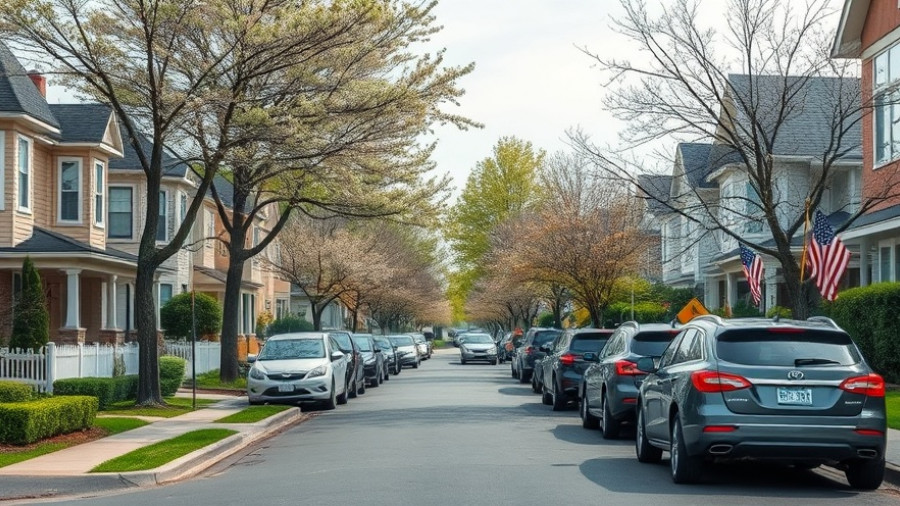
The Rising Costs of Cladding: A Wake-Up Call for Homeowners
In an industry where safety should never take a backseat, Taylor Wimpey's recent financial results unveil a troubling trend that could resonate with many London homeowners. With a reported pre-tax loss of £92.1 million for the first half of 2025, the company has been grappling with a surge in costs primarily attributed to cladding issues. While their revenue saw a healthy increase of 9% to £1,655 million, it’s the unforeseen expenses related to safety that truly shifted the narrative for this notable builder.
As the landscape of housing safety evolves, the implications reach far beyond Taylor Wimpey’s quarterly earnings. The increased cladding fire safety provision of £222.2 million signals a significant reassessment of building safety regulations, driven by newly updated fire risk assessments. Approximately two-thirds of this amount is earmarked for remediating historical building defects, pinpointed through invasive assessments that revealed previously overlooked vulnerabilities.
Why Cladding Costs Matter to Homeowners
The focus on cladding is not merely an architectural concern; it’s a matter that hits close to home for many young homeowners in London. The £1.3 million increase in operating profit appears insignificant when set against the backdrop of a £20 million charge associated with defective workmanship, revealing a systematic flaw in industry standards that directly impacts the safety and well-being of residents.
The crux of the matter lies in the evolving interpretations of the PAS9980 standard by fire engineers, which has led to some buildings falling into the 'needs remediation' category long after they were deemed safe. This complex interplay of regulations highlights the urgent need for clear communication and accountability in the way housing bodies interact with their clients—homeowners.
What This Means for the Housing Market
As Taylor Wimpey navigates these tumultuous waters, many prospective buyers and owners may feel uncertain about their investments. Company CEO Jennie Daly’s remarks about anticipated cladding remediation cash outflows of around £100 million in 2025 emphasize that the road ahead is not without bumps. However, she reassures that overall cash flows should stabilize, even with an uptick in remediation prices. This kind of reassurance is essential for maintaining buyer confidence, especially in a bustling market like London.
Nonetheless, potential homebuyers, particularly young, tech-savvy individuals eager to invest in their first home, must remain vigilant. Understanding the implications of building safety assessments, compliance costs, and potential future expenses is crucial in today’s complex property landscape. As they approach their property journey, they would benefit from staying informed on the latest insights through avenues like Trade Talk, which covers industry trends and developments.
Community Response and Action
The local community response has been robust, with many residents advocating for stringent policies that hold builders accountable for their past mistakes. The cladding crisis has ignited discussions about how we can ensure safer living environments not just for today’s homeowners but for future generations as well. Engaging local officials and participating in discussions about residential safety can empower homeowners to take control of their housing futures.
By joining voices in the community, young homeowners can shape a safer housing sector that places customer safety above corporate profit. Collaborative efforts will be vital as more developments emerge that align with sustainable and eco-friendly living, ensuring that concerns over costs do not overshadow the importance of secure homes.
Final Thoughts
As Taylor Wimpey’s story unfolds, it serves as a reminder of the delicate balance between industry growth and public safety. The evolving building safety standards will undoubtedly change how new developments are structured, affecting everything from valuation to market appeal. Homeowners and potential buyers must take heed as the industry navigates this landscape. By prioritizing awareness and urging accountability, they can make informed decisions that directly impact their living conditions.
Being equipped with knowledge and community engagement strategies, you can take steps to ensure your home is both a sanctuary and a sound investment. Stay connected with local community news to learn about initiatives advocating for building safety and sustainable living. Together, we can cultivate a future where home is synonymous with safety.
 Add Row
Add Row  Add
Add 




Write A Comment